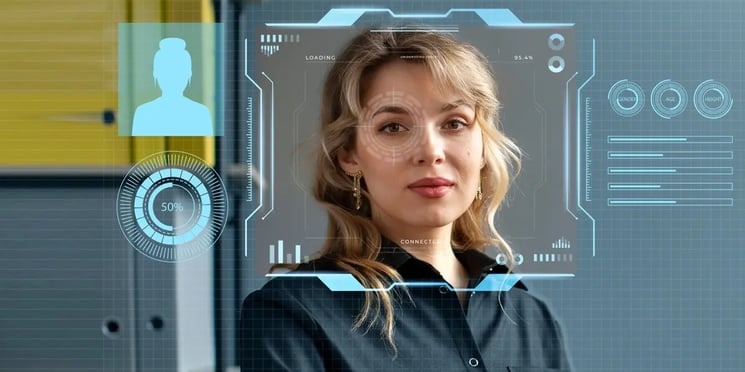Verification of identity is required before interacting with any individual. Notably, it is essential to use strong ID verification procedures when conducting business remotely. Businesses are unable to protect their landscape from illegal tactics in the absence of an authentication mechanism. These days, fraudsters use fabricated and fraudulent documents to approach businesses and circumvent security measures for a variety of illegal purposes. Businesses that don’t have strong identity verification procedures in place are frequently the targets of identity theft, data breaches, and money laundering. Artificial intelligence algorithms are used in face verification technology, which checks a variety of biological characteristics to confirm a user’s identity.
Applications of the Technology
Numerous businesses have embraced biometric facial recognition technologies to enhance their security systems. It will help prevent fraudulent activities in various industries. The following are some well-known instances of businesses that use face verification services:
- The employment and admissions processes in the education sector are now conducted remotely. Secure methods of security are also necessary for their identification. Face verification services shield organizations from data breaches and other issues while enabling improved protection against fraudster attacks. Face verification services are used by many industries to track attendance. Facial scanners are used in conjunction with turnstiles to track staff and student-employee attendance.
- In order to guarantee correct medical records and treatment, face verification services assist healthcare providers in verifying the identity of patients. It aims to prevent unwanted access to private spaces in medical facilities. Besides, it also ensures that the right patient gets the right treatment by identifying the diseases using facial features.
- To safeguard logins, financial services use facial verification services. Before entities are granted access to particular accounts, this technology aids in their authentication. Additionally, because face verification enables an improved identity verification process, it is the greatest way to safeguard banks against fraudsters.
- Face verification services are now being used by law enforcement to identify potential offenders. Face prints let these companies identify criminals and enable fast and accurate matches. These days, face verification services can aid in the comprehensive search for missing people. In suspected regions, a variety of scanners are installed, these devices quickly cross-match each face with the appropriate database to identify a match of the required entity.
- This technology is also beneficial when used in travel industries like airports. It speeds up the passenger’s identification process eliminating the need to wait in long queues for a long time.
Face Verification in KYC
When using biometric screening methods to verify a customer’s identification, KYC facial recognition is essential. These systems function by comparing the customer’s identity credentials that are kept in the official databases with their real-time biometric data. By denying the imposter access to authentic client credentials, examiners are able to identify every fraudulent activity.
Machine-learning modules support facial recognition, enhancing the efficiency of consumer face mapping and enabling organizations to quickly identify identity spoofs and deepfakes. KYC facial recognition is essential for controlling organizational procedures in both government and banking entities.
Consequently, businesses should integrate KYC face recognition technology since it helps them draw in more customers while adhering to legal requirements. The overall expense and inconsistencies related to manual screening checks are greatly decreased as a result of these automated checks.
Why it is Important in KYC?
Face recognition checks are essential in determining how many different procedures work. These steps guarantee that face features match their corresponding papers one-on-one. In order to lessen the overall severity of fraudulent actions, KYC facial recognition helps to prevent the misuse of stolen identification documents. As the onboarding processes reveal the criminals’ true identities, they are aggressively detected. The significance of AI facial recognition technology in ID evaluation is therefore unavoidable and needs to be emphasized throughout the onboarding procedure.
Conclusion
Advanced technologies like face verification can simplify, ease, and improve the accuracy of identification verification procedures. This biometric technique is used by face recognition software to confirm people’s identities and shield companies against spoofing and other online fraud. It is a widely used technology that unlocks devices and identifies crooks in security systems. Businesses and customers find facial biometric verification handy because it does not require physical presence or passwords. Face verification services are used by a variety of industries to improve security against the sophisticated tactics of criminals.


